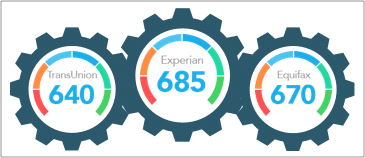We all need to save money. We have goals that require money and life has a way of tossing up unexpected expenses. Part of saving is understanding the different types of spending, prioritizing and setting goals for each type. Saving isn’t easy, but the better we understand saving the easier it will be. Let’s look at three important categories of savings, where you should keep each type and how much you should aim to save for each category.
The Three Types of Savings
Saving sounds simple: you take any money you don’t need and put it aside for a rainy day. If you don’t have extra money, you check your budget and see what you can cut.
In practice, it’s a little less simple. There are three essential types of savings:
- Your Emergency Fund
- Your Goal-Oriented Savings
- Your Retirement Savings
All of these types are important and deserve attention.
Your Emergency Fund
Your emergency fund is designed to cover unexpected expenses, ranging from a veterinarian’s bill to car or home repairs to a period of unemployment.
These expenses have two basic characteristics: you don’t know when they will arise and you don’t know how much money you’ll need. Your emergency fund needs to be easily accessible and adequate for any probable emergency expense.
Most experts advise holding a minimum of three month’s living expenses, ideally six months. Calculate this figure based on your minimum necessary living expenses: if you lose your job you won’t be worried about luxuries.
Keep your emergency fund in an account that you can tap at any time. A high-yield savings account with FDIC insurance is ideal. Never keep an emergency fund in speculative investments.
Your Goal-Oriented Savings
Goal-oriented or personal savings are funds that you put aside for a planned expense. This could be anything from a vacation to a car, a downpayment on a house or a child’s college education.
Goal-oriented savings are specific. You know approximately how much you will need and when you will need it. Divide the amount you’ll need by the number of months until you’ll need it and you’ll know how much you need to set aside every month to meet your goal. If you’re saving for several expenses at the same time you may need to prioritize the funds you set aside.
You’ll want to keep your goal-oriented savings in an insured low-risk account, but because you know when you’ll need the money immediate access is less important than it would be for an emergency fund. Consider certificates of deposit (CDs) for your goal-oriented savings.
Your Retirement Savings
Retirement may seem far away, but starting early can save you headaches down the line. What you can save will depend on your salary, but this rough guide is accepted by many retirement planning experts.
| Age | Savings |
| 30 | One year’s salary |
| 40 | Two times your annual salary |
| 50 | Four times your annual salary |
| 60 | Six times your annual salary |
| 67 | Eight times your annual salary |
These are general targets, not fixed rules and you shouldn’t panic if you’re behind these benchmarks. The important thing is to keep saving.
Retirement savings are designed to meet long-term goals and most planners advise keeping your retirement savings in a diversified portfolio of stocks and bonds. You may opt for a higher-risk portfolio weighted toward stocks when you’re younger and shift to a more conservative portfolio as your retirement approaches.
Popular vehicles for retirement savings include individual retirement accounts (IRAs), employer-sponsored 401(k) plans and brokerage accounts. It’s advisable to speak to a financial planner to ensure you are on track for retirement.
How to Save Money For Your Goals
Saving isn’t easy and when you’re under financial stress it may seem impossible. Don’t give up. Try these time-tested steps for getting out of the paycheck-to-paycheck cycle and starting to save:
- Track your expenses. The first step to saving money is to know where you’re spending it. Start tracking every expense, no matter how small. At the end of each month break down your spending and decide what’s essential and what’s not. There’s nothing wrong with keeping some luxuries, but there will usually be things you can cut.
- Add to your income. Try asking for a raise: you may not get it but it can’t hurt to try. Try working more hours, taking a second job or taking on a side hustle.
- Make a budget. If you’ve maximized your income and you have a clear idea of how you’re spending money, you’re ready to make a budget. Make sure it’s realistic and be prepared to fine-tune it as you go along. Trim your unnecessary expenses and be sure to include savings in your budget.
- Follow your budget. Making a budget is the easy part: following it requires continuous effort and discipline. It’s not easy but watching your savings grow should help you stay focused!
- Start small and build up. If you start with unrealistic goals it’s easy to get frustrated and quit. Keep your goals modest and your savings allocations realistic and focus on gradually building them up as you go along. Once you get in the habit of saving and looking for ways to save you may eventually find yourself saving more than you thought possible.
Saving is one of the best ways to get out of financial stress. Following these steps and building a financial cushion, even if you start with very little, can help put you on the road to financial stability.
Conclusion
With careful budgeting and financial discipline, almost anyone can save. If you have to start with very small amounts, don’t worry: that’s a start. Stay focused, keep putting money aside and watch your savings grow!




